From the Field
February 14:
Steve Howell reports from the conclusion of another great Week in San Blas, Mexico tour

It was full of sun, birds, great food, and great memories, from brilliant Military Macaws... Photo by participant Jim Vincent
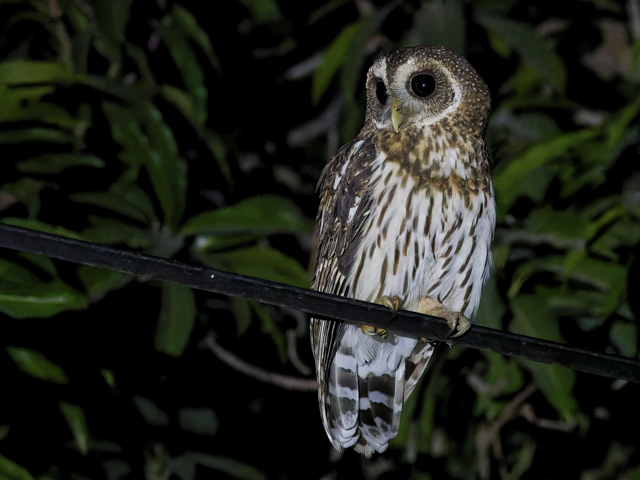
To a cryptic Mottled Owl.Photo by participant Jim Vincent
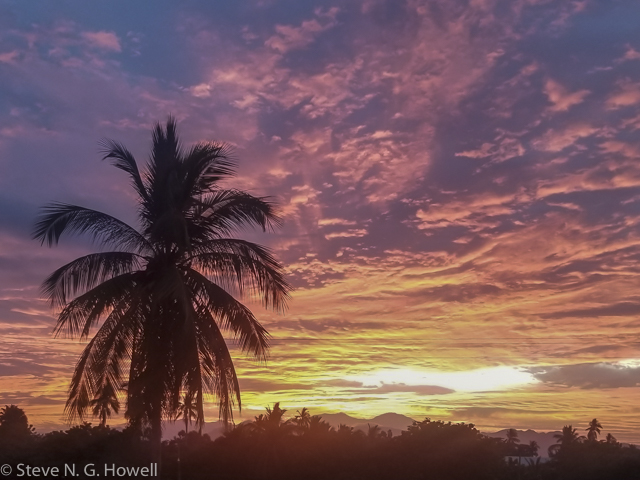
We enjoyed some amazing sunrises (here, from the hotel balcony) and sunsets,
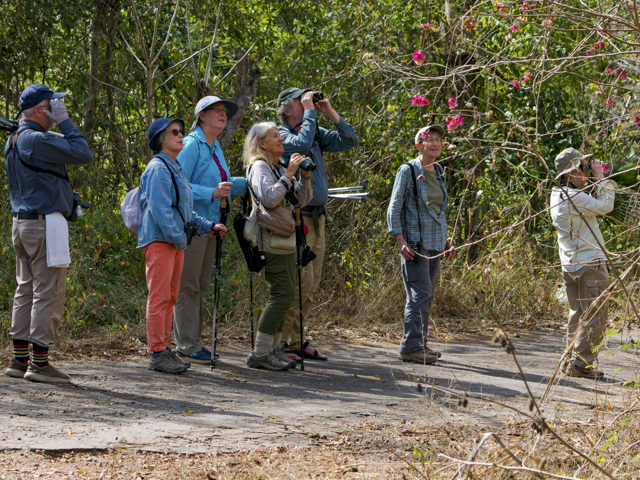
As well as birding on quiet backroads. Photo by participant Jim Vincent
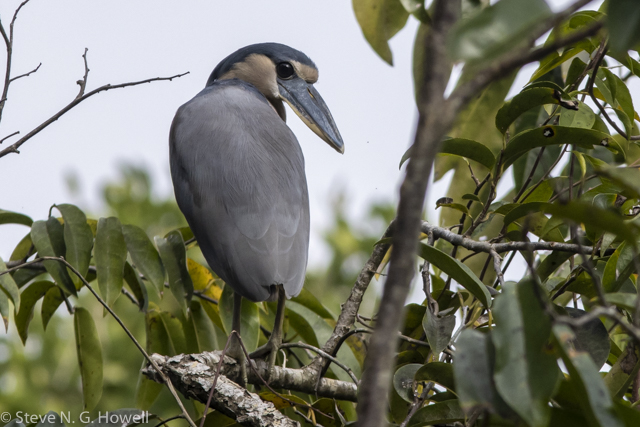
Boat trips produced the bizarre Boat-billed Heron
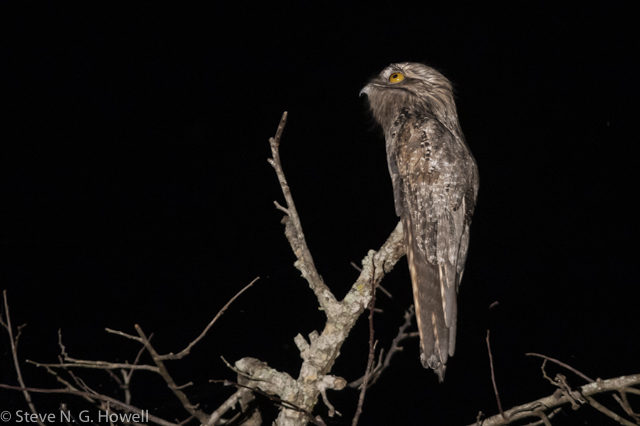
And the equally—or more?—bizarre Northern Potoo,
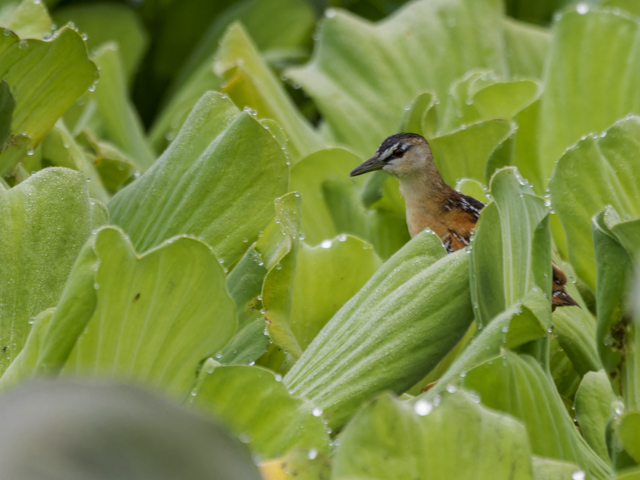
Plus the tiny Yellow-breasted Crake, a recent discovery in the area. Photo by participant Jim Vincent
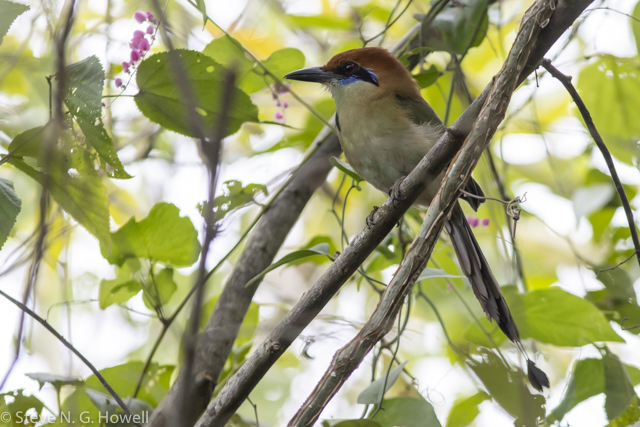
Russet-crowned Motmot kept us waiting till the 11th hour, but what views when we did find it!
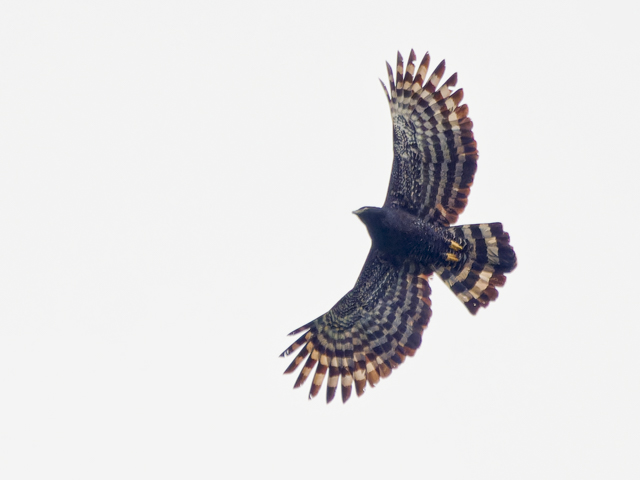
And then there was this surprise Black Hawk-Eagle spotted on our drive to the airport, for which binoculars and cameras were hastily unpacked! Photo by participant Jim Vincent
Thanks to a great group for such a fun tour!
February 8:
Fabrice Schmitt reports from the Santa Marta (Colombia) tour
This was another fantastic tour to escape the boreal winter, spending a week in the tropics, enjoying wonderful Caribbean food, staying in fantastic lodges, and seeing around 300 birds species!!
The Sierra Nevada Cordillera and the Guajira Peninsula are home to an amazing list of restricted-range species, and we had excellent views of (just to name a few…) White-whiskered Spinetail, Chestnut Piculet, Vermilion Cardinal, Orinocan Saltator, White-lored Warbler and Black-backed Antshrike!
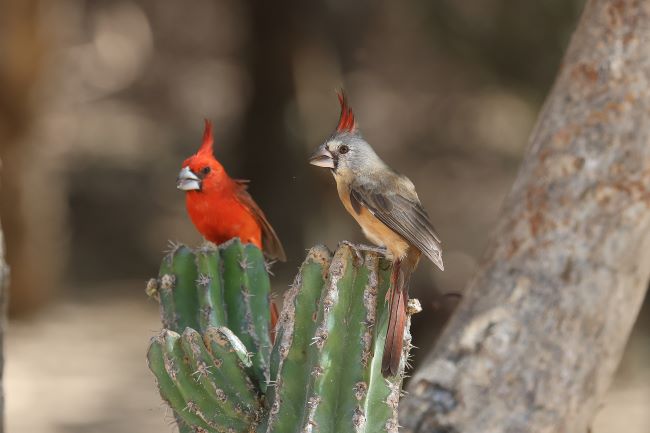
Female Vermilion Cardinal are as cute as their mates!
Obviously, we had a long list of “Santa Marta” species, such as Santa Marta Blossomcrown, Antbird, Tapaculo, Antpitta, Foliage-gleaner, Woodstar and Brushfinch!
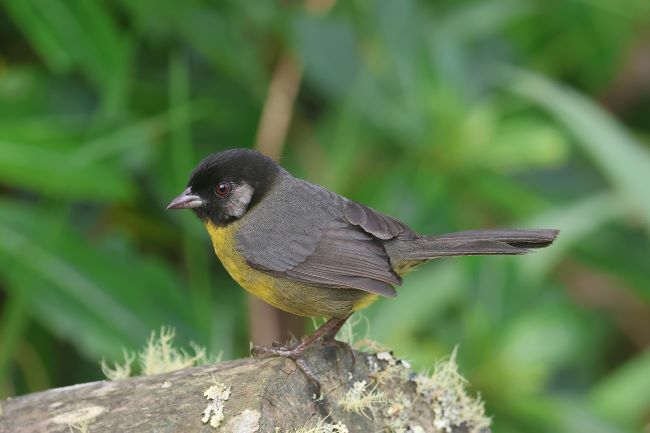
The Santa Marta Brushfinch is a common endemic of the cordillera
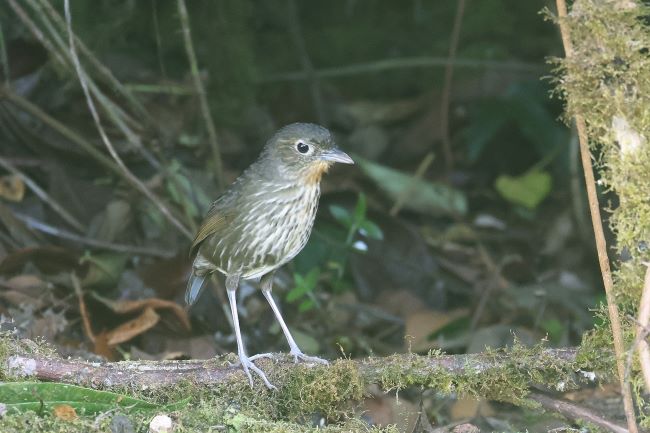
This year two Santa Marta Antpittas were fed by the guard of the San Lorenzo biological station
Besides these very local species, we also enjoyed stunning encounters with Northern White-fringed Antwren, the lovely Blue-naped Chlorophonia coming to the fruit feeders, a pair of the critically endangered Blue-billed Curassow, the charismatic Russet-throated Puffbird, a beautiful pair of Rusty-breasted Antpitta, Golden-winged Sparrow, and so many more great sightings!
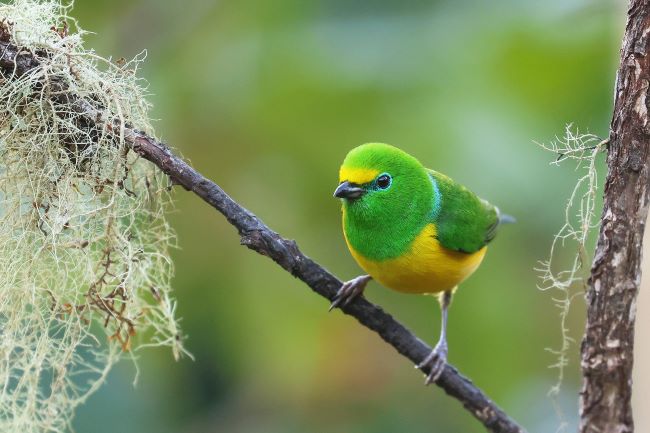
Blue-naped Chlorophonia is one of the cutest birds coming to the feeders at Mountain House Lodge
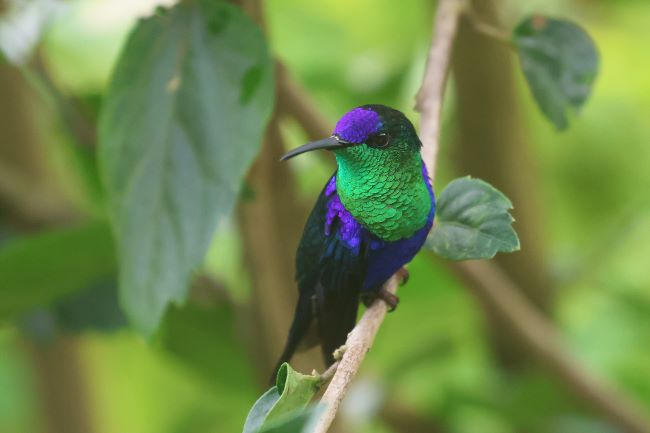
While Crowned Woodnymph is one of the most sparkling ones!
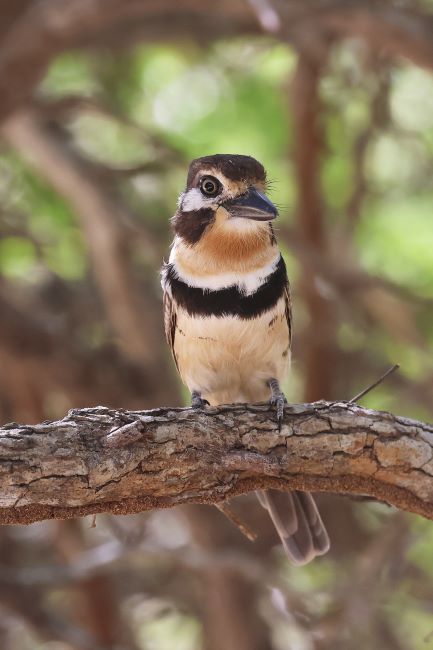
Russet-throated Puffbird is common in the Guajira lowlands
Our eBird trip report can be seen here: https://ebird.org/tripreport/194030
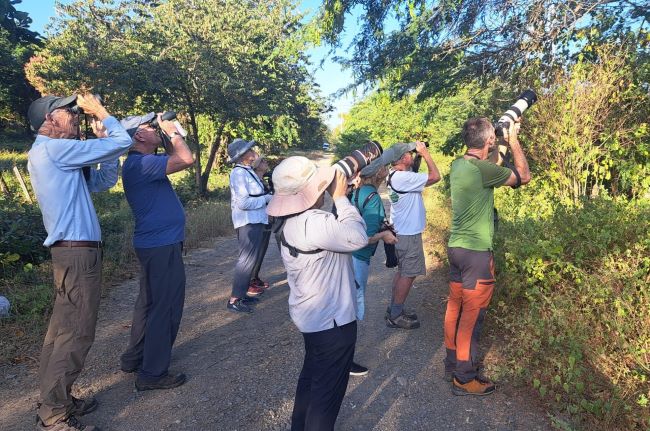
A happy group birding the dry shrubland of the Guajira Peninsula
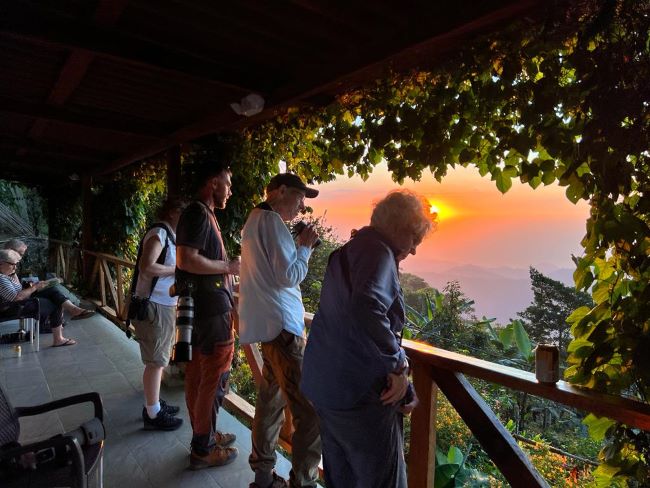
Enjoying sunset and birds coming to the feeders at Mountain House Lodge
We also enjoyed an endless list of butterflies, moths, nice reptiles including good views of Green Iguana, and a few mammals such as Colombian Red Howler, and Cotton-top Tamarin.
Some of the plants and animals photographed during the tour can be seen on the iNaturalist trip report here: https://www.inaturalist.org/projects/wings-santa-marta-colombia-january-2024
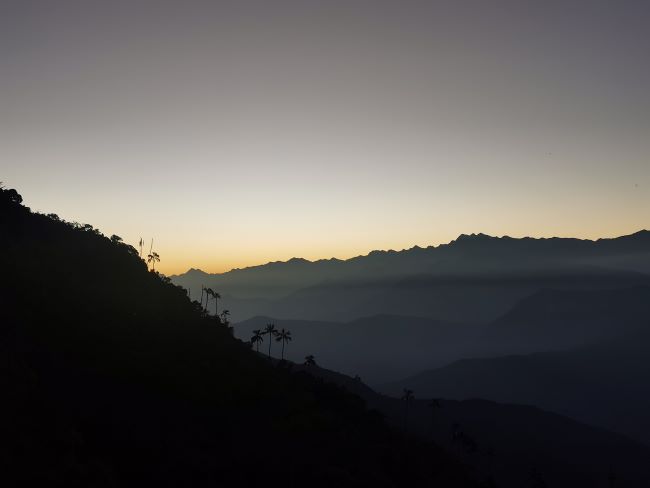
The beautiful sunrise on the snow-capped peaks of the Santa Marta mountains
February 6:
Jake Mohlmann reports from the Arizona: A Winter Week tour
We just wrapped up another Winter Week tour through Southeast Arizona. The highlights were many, including perfect weather throughout. Our group got along swimmingly as we covered the vast desert valleys and snow-capped peaks scattered throughout the region.
Our group excited to bird Sweetwater Wetlands
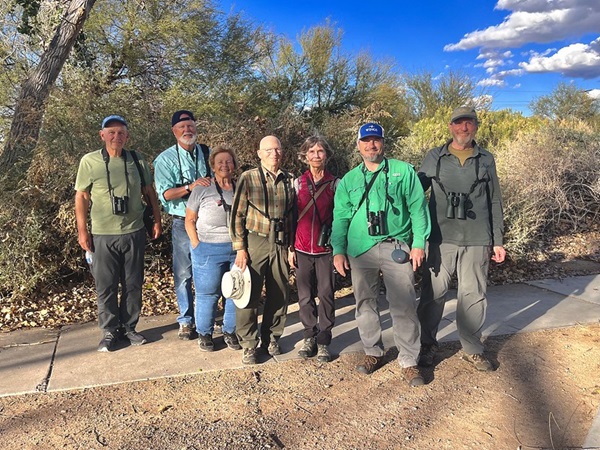
Many of the resident species were enjoyed, especially the gregarious Bridled Titmouse, voted a favorite for one participant and a close second for others.
Bridled Titmouse allowed close approach
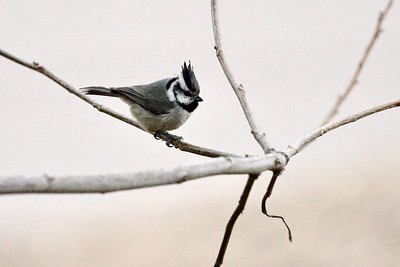
This tour is designed to visit areas where more tropical species reach the northern edge of their range. We were excited to get great views of a pair of Rufous-backed Robins in Patagonia, only confirmed breeding in the state since 2018.
A Rufous-backed Robin surveys from above
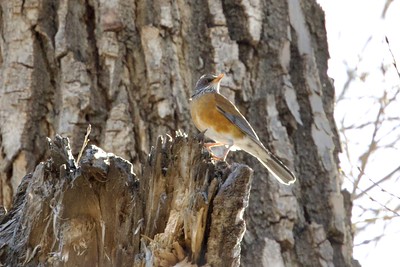
Another rare wintering species that we scored was a male Elegant Trogon. This bird was coming into a pyracantha bush full of berries and repeatedly sallied up to pluck the bright red fruit…almost as colorful as its own belly color.
A major highlight was this male Elegant Trogon
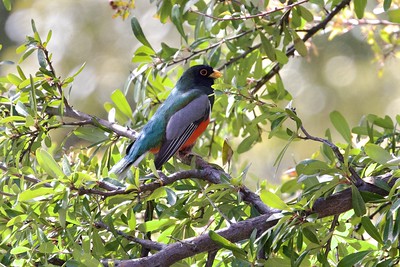
The Chiricahua Mountains are not to be missed for several reasons, most of which may be the fact that this range is the only place north of the Mexican border where the public can get access to this species. We lucked into a couple of them high up in the pine forests it prefers.
This Mexican Chickadee fed high in the conifers of the Chiricahua Mountains
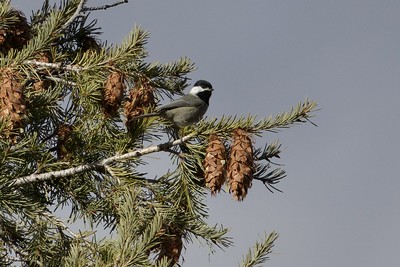
We had fun with raptors on this trip. A multitude of Red-tailed Hawks of many flavors were seen daily, so we were excited to finally find a few regal Ferruginous Hawks in the mix in the Sulphur Springs Valley.
A Ferruginous Hawk sits in perfect light
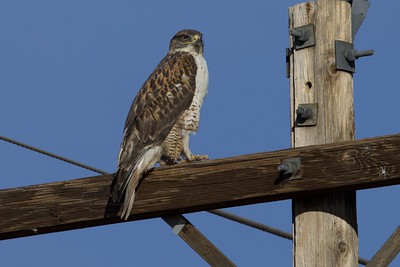
In the San Pedro River Valley, we witnessed the rarest raptor of all. A seldom seen dark morph Northern Harrier was spotted hunting over the marshes of the Sierra Vista EOP.
The “Dark Ghost” hovers over the reeds
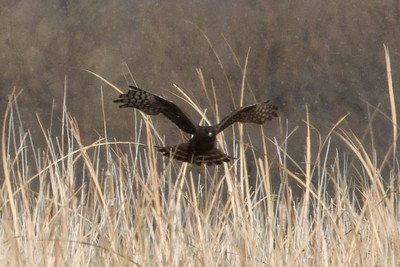
This was a good winter tour for seeing owls well. Among the highlights were both Whiskered and Western Screech-Owls in their natural habitats.
This Western Screech-Owl soaked in the morning sun
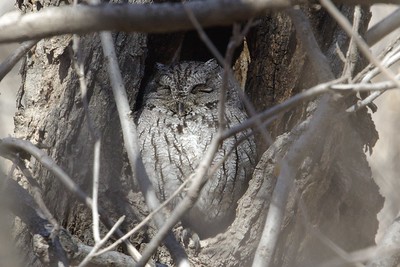
We spent time on several days looking for longspurs out in the desert grasslands. Finally, we scored a major highlight for some with fantastic looks (and photos) of a Thick-billed Longspur trying to blend in with cow pies.
A long-awaited Thick-billed Longspur finally showed
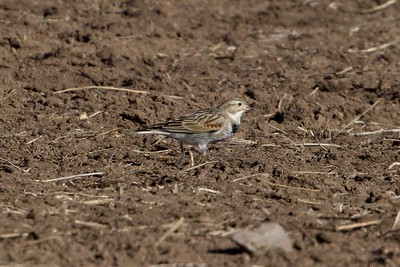
The Sandhill Crane show at Whitewater Draw often leaves visiting birders in awe as they watch swirling flocks of thousands of birds come in for an afternoon loaf. This year the birds got quite close.
…CRANES!
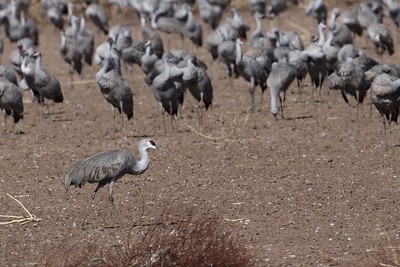
January 30:
Steve Howell & Luke Seitz report from their recent Antarctica and Cape Horn cruise.

This trip never ceases to inspire wonder at the sheer magnitude of the Great White South, impossible to capture with photos—although we all tried!
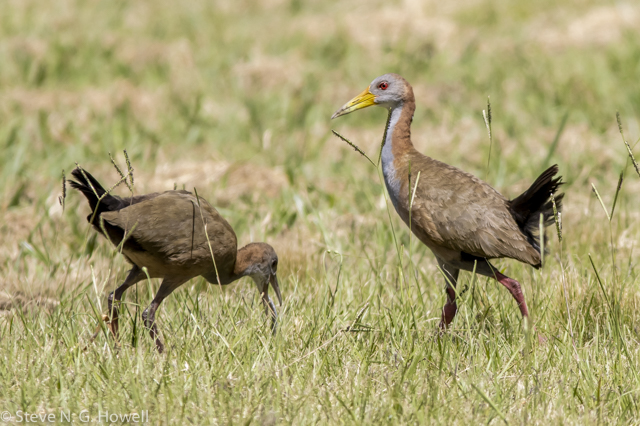
But there’s a lot more to the trip than that, including summer in Uruguay—with Giant Wood Rail feeding giant young…
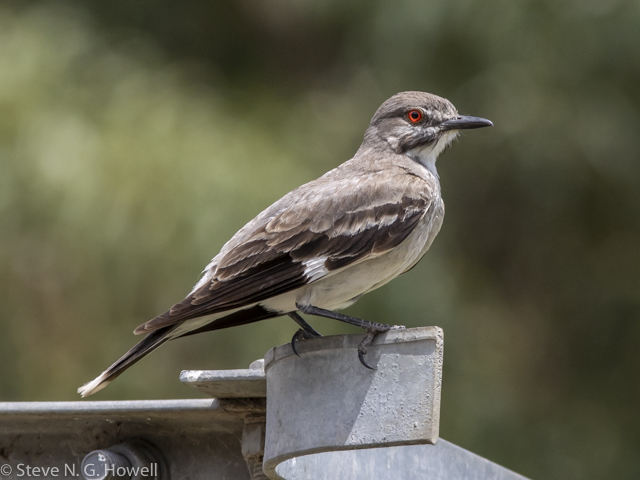
As a handsome Gray Monjitawatches on.
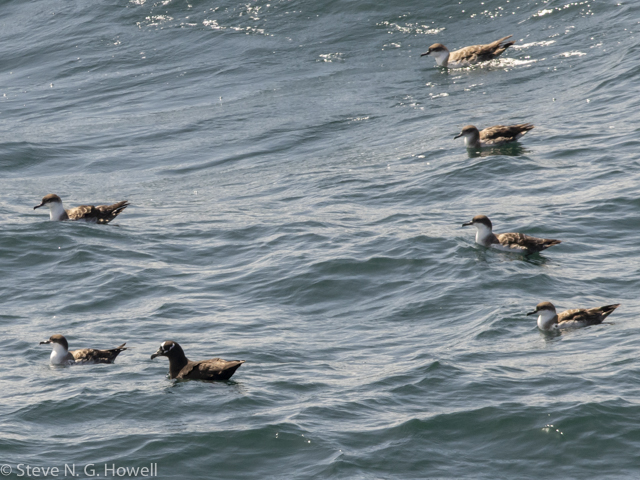
Huge flocks of Great Shearwaters held both the sought-after Spectacled Petrel and little-known Cape Verde Shearwater (look carefully!)
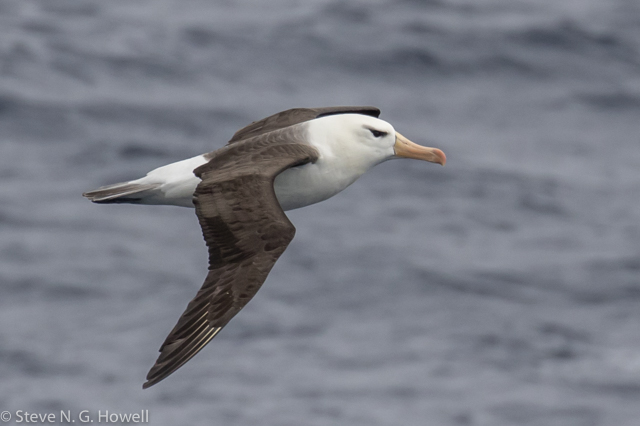
Black-browed Albatross is pretty nice for the ‘common daily albatross’
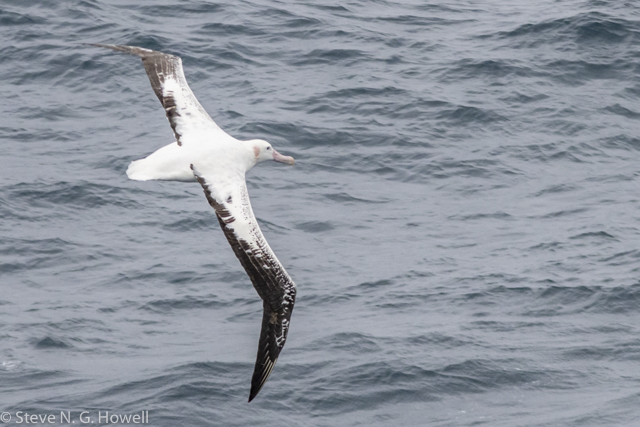
But the giants such as this Snowy Wandering Albatross…
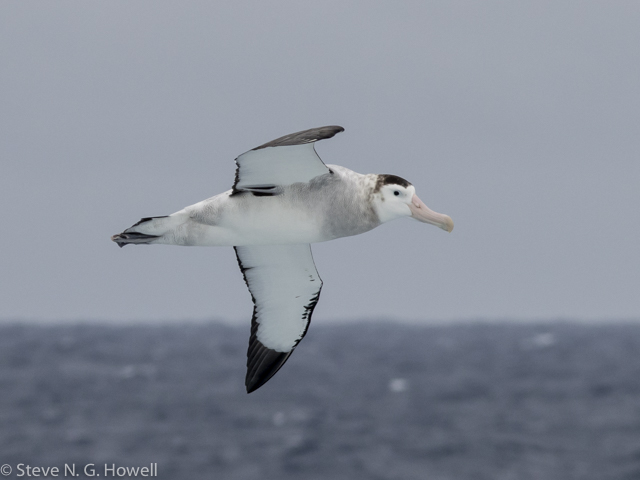
And this eye-level Antipodes Wandering Albatross are the real Southern Ocean icons
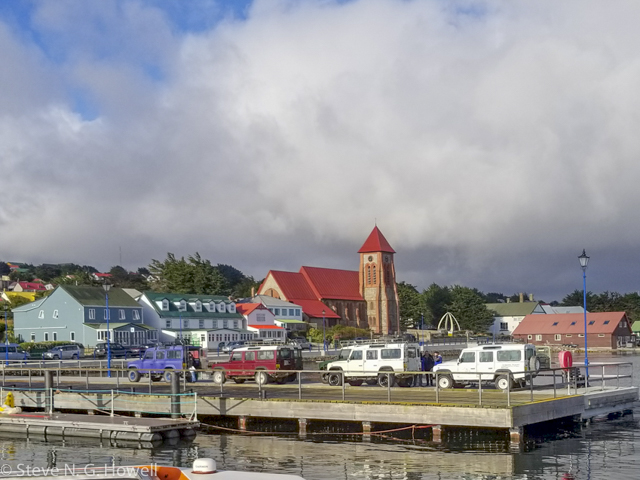
Our visit to the Falklands, here the Port Stanley waterfront, was blessed by sunny weather
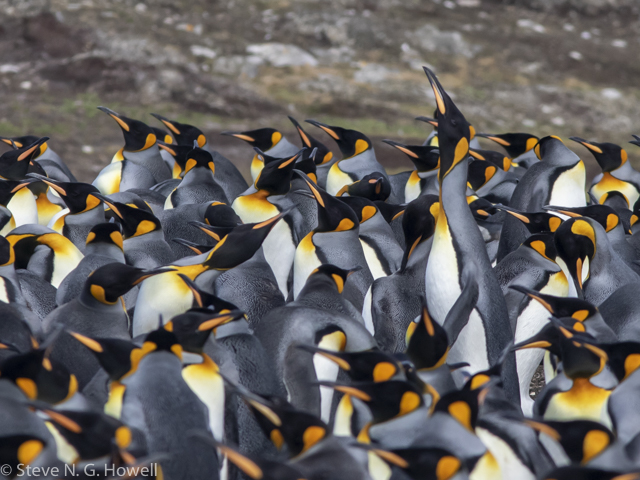
Perfect for appreciating the sights and sounds (and smells!) of the amazing King Penguin colony.
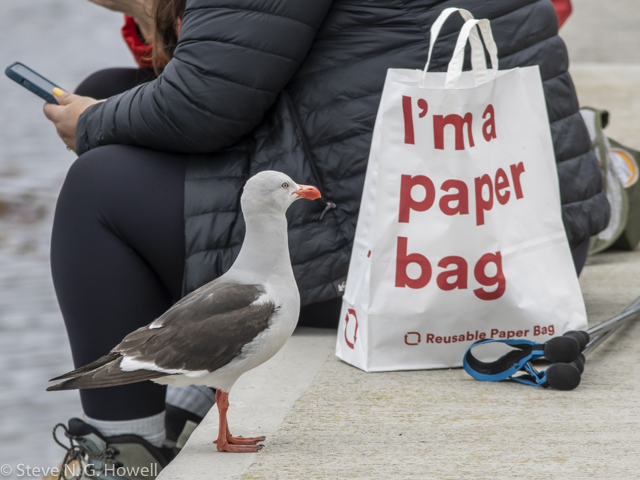
While Dolphin Gulls on the waterfront needed to be watched carefully!
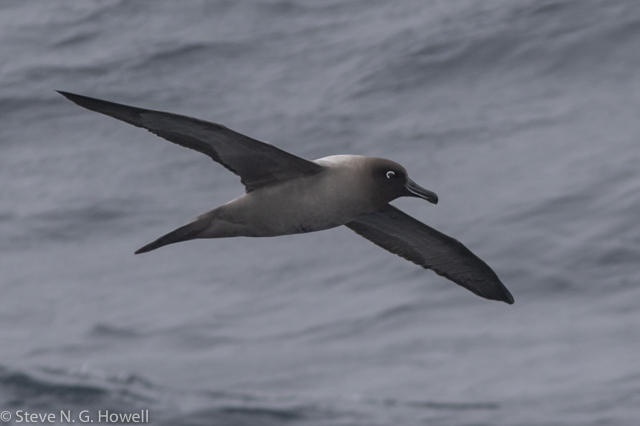
Back at sea, Light-mantled Sooty Albatrosses marked our transition into cold Antarctic waters
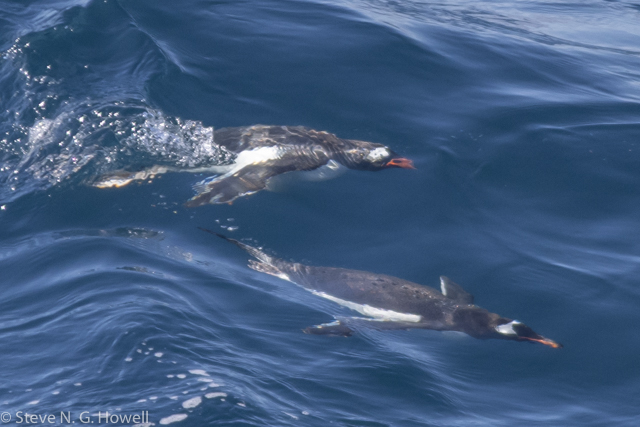
And then it was three days of snow, ice, and penguins, some ‘flying’ through the water—like these Gentoos in their true element
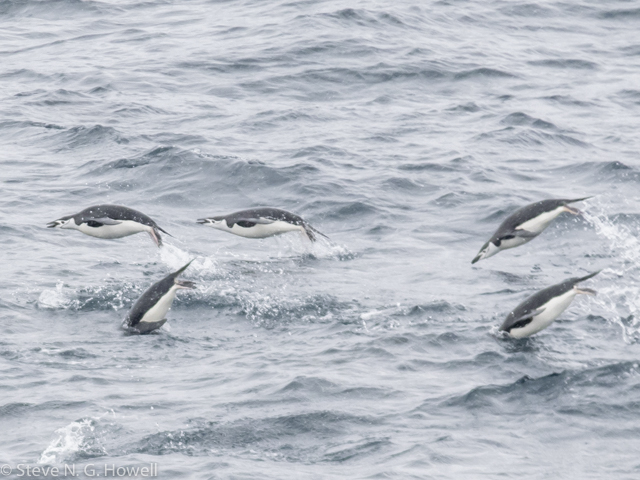
Others ‘porpoising’ like these Chinstraps
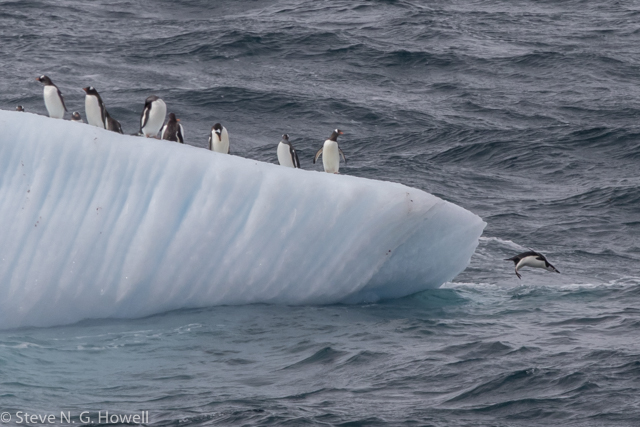
And others just hanging out

Scenery…

And more scenery—oh, those blue icebergs!
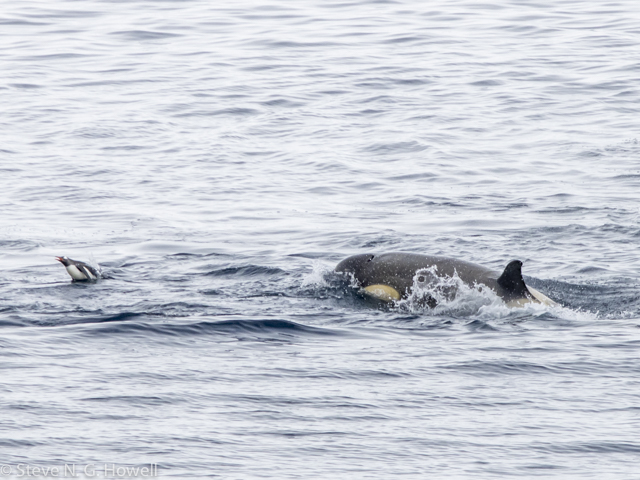
Was interrupted at times by Killer Whales, here hunting an unfortunate Gentoo Penguin
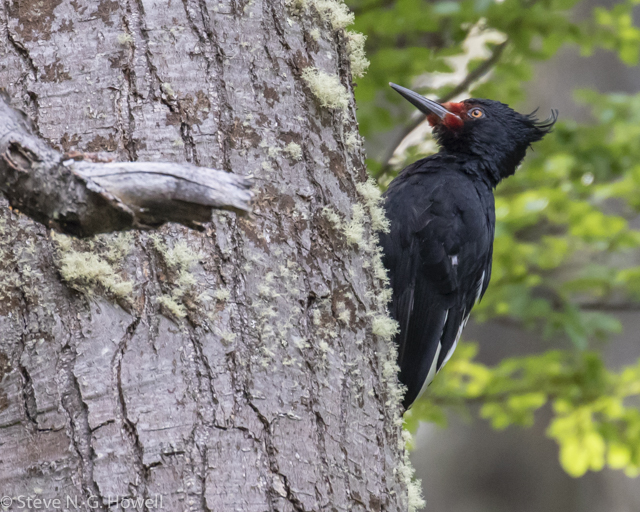
Before crossing back across the Drake to see trees again, along with the majestic Magellanic Woodpecker
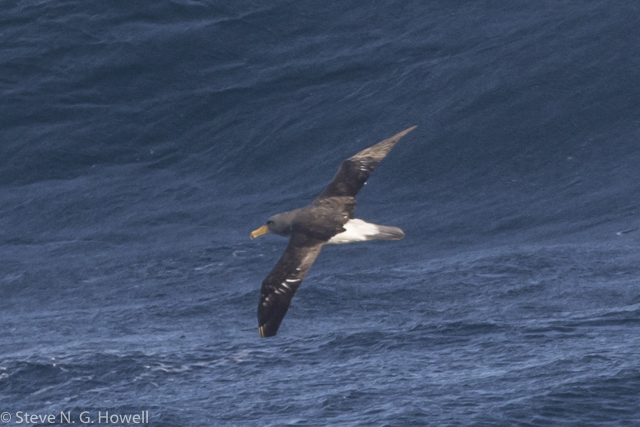
And then it was over to the Pacific Ocean with different oceanic birds, such as this handsome Chatham Albatross
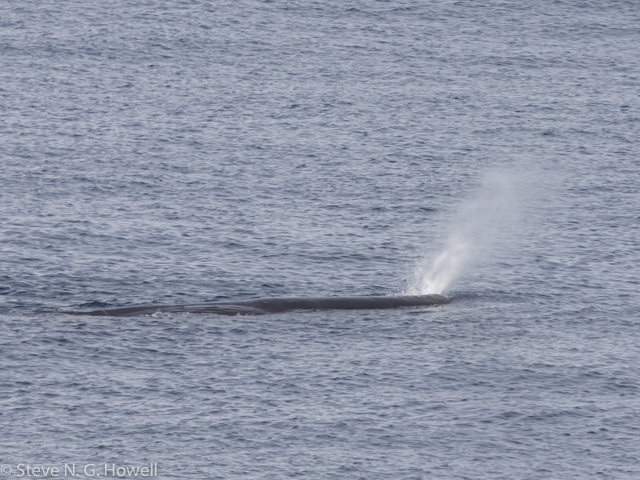
Plus new mammals, like some very obliging Sperm Whales, before return to land and the so-called ‘real world’
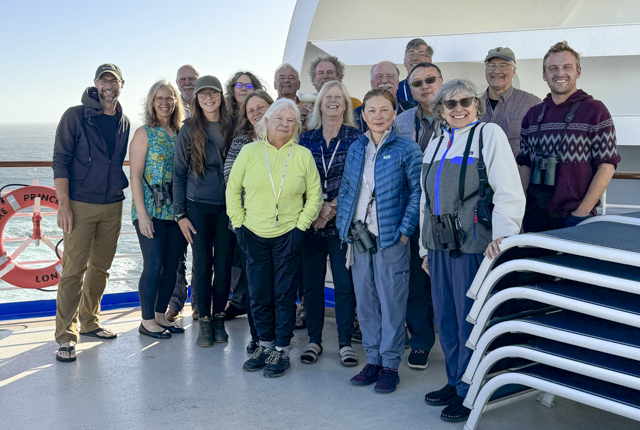
And what a wonderful group of people to share the trip with!
January 26:
Rich Hoyer led a wonderful trip to Oaxaca over Christmas
The festive atmosphere, great food, cultural attractions, and above all, the great birds made Oaxaca a fabulous place to spend the last nine days of the year 2023. The ruins of Monte Alban and Yagul were complemented by a walk around the amazing carved radish displays for the 126th annual competition in the Oaxaca City square and a visit to an exquisite rug studio in Teotitlán del Valle. In between our cultural stops were bouts of birding where Elegant Euphonia, Red Warbler, Ocellated Thrasher, Slaty Vireo, Bridled Sparrow, Happy Wren, and White-tailed Kite were memorable sightings from the Oaxaca Valley and Cerro San Felipe north of the city. Our two-night side trip to the wetter Gulf of Mexico slope in the north of the state yielded Orange-billed Sparrow, Gray Hawk, Collared Trogon, and White-winged Tanager to name a few favorites among the more than 130 species that this side trip added to the bird list (almost doubling the total in just three days). To top it all off, we got to sample the rich local cuisine highlighted by several kinds of moles in a variety of local restaurants, tasted several varieties the locally produced mezcal, and enjoyed picnic breakfasts and lunches (and even one picnic dinner) in the field prepared by our wonderful driver Basilio.
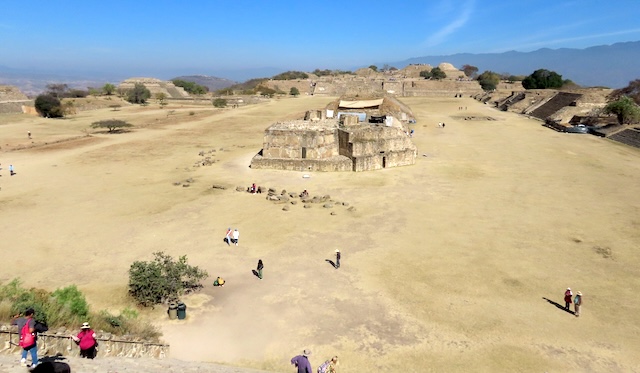
The complex ruins of Monte Alban are fascinating unto themselves, but they are surrounded by native habitat with many interesting birds.
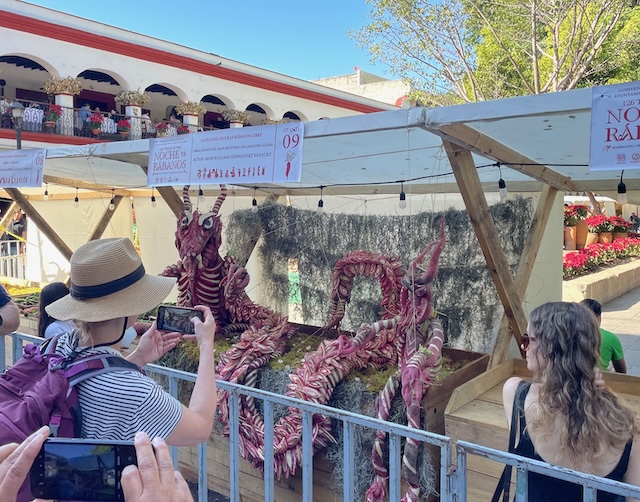
At the Noche de Rabanos festival, the 2024 winner in the open category was René Williams’ creation titled “Leviathan (The Great Monster of Destruction)”.
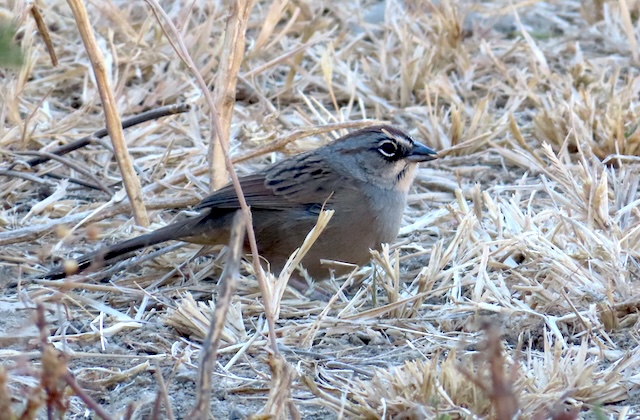
We got very lucky to see this Oaxaca Sparrow – not an endemic to the state, but the only bird bearing its name – normally a very shy and reclusive bird in the winter.

We had a marvelous demonstration of the different types of wool and the many natural plants used to dye them before we browsed the Perez studio and bought some of the exquisite rugs.
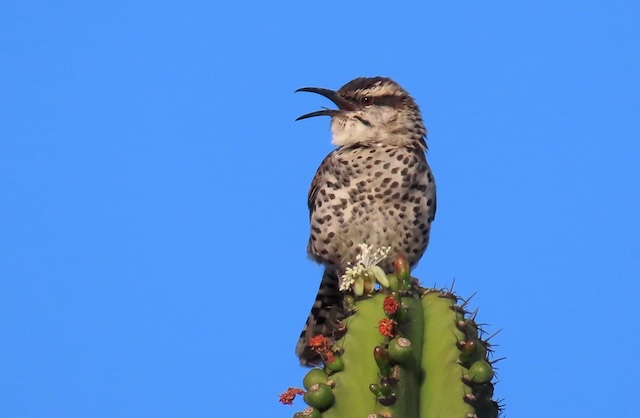
Boucard’s Wren charmed us from the columnar stems of the organ-pipe cactus Myrtillocactus schenkii below the fascinating ruins of Yagul.
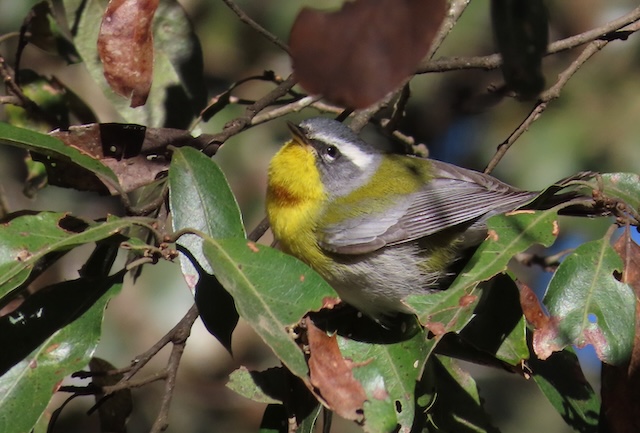
In the pine-oak forests north of town, we scored Red Warbler, Dwarf Jay, Northern Pygmy-Owl and this very cooperative Crescent-chested Warbler.
January 16:
Jared Clarke reports from our recent tour to Newfoundland:
Our popular “Newfoundland in Winter” tour has drawn to a close for yet another year, with five intrepid birders braving the elements to score some wonderful winter birds. Participants came from points south, east and west to enjoy the diversity of northern species that call this island home – and they were not disappointed.
Early surprises came in the form of rare visitors from very different directions – an ABA-rare Ruff looking very out of place amongst the snow & ice (photo below), ...a long-staying Pink-footed Goose from Europe, and TWO Yellow-throated Warblers from much further south.
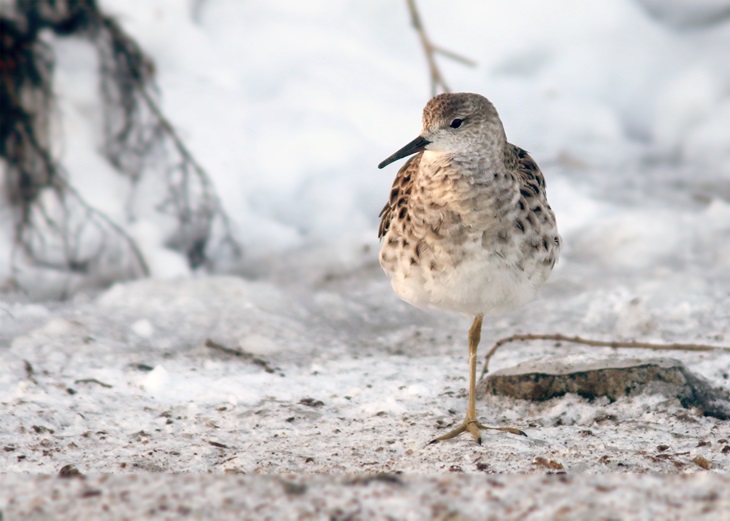
Always a highlight, Dovekies (aka “bullbirds” to local Newfoundlanders) put in an excellent showing and even allowed several very close views.
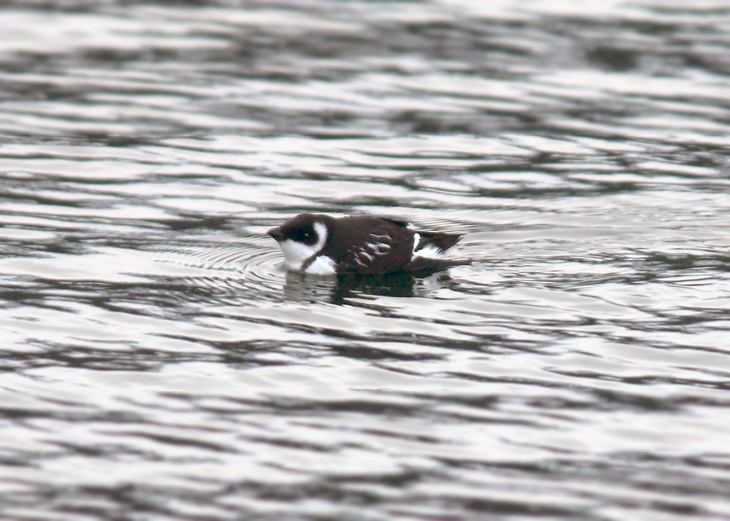
An encounter with three Willow Ptarmigan foraging on the snow white tundra was a special treat...
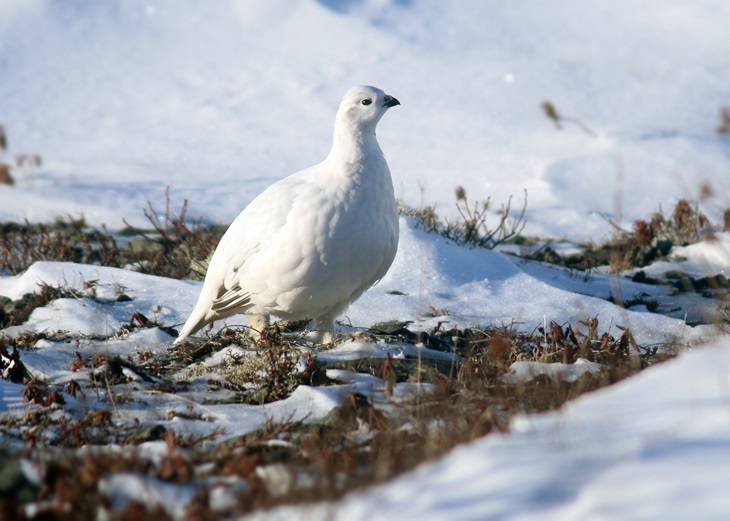
...as were other denizens of the north including Thick-billed Murre, Bohemian Waxwing (photo below) and White-winged Crossbill.
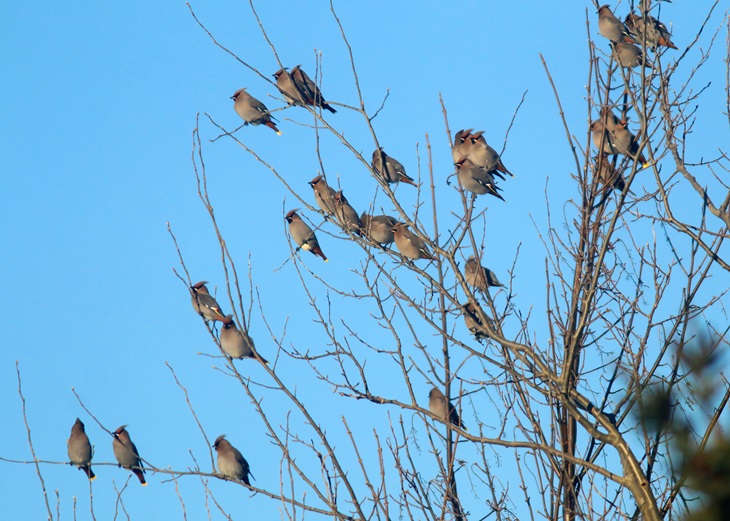
Local celebrities such as Great Cormorants, Eurasian Wigeon and several dozen Tufted Ducks were of course on full display. After a couple early misses, we also connected with a flock of 60+ Purple Sandpipers at the easternmost edge of the continent – a special moment for several of our guests and a fun way to wrap up a great week of birding in the North Atlantic!
Group at Cape Spear

December 20:
Fabrice Schmitt reports from a recent tour to Oman
What a fantastic trip we had to Oman! Starting in Salalah, we were able to explore the magnificent wadis at the foot of the mountains that encircle the capital of Dhofar, finding some of the species that would eventually be voted as the best birds of the tour, such as Arabian Partridge, Arabian Eagle-Owl, Desert Owl and Yemen Serin. However, the sighting that made the biggest impression on the group was a close encounter with a flock of Hypocolius found in an oasis in the middle of the desert. On that same day, we also had a memorable sighting of hundreds of Chestnut-bellied Sandgrouse coming to drink to a water hole while a few Greater Hoopoe-Lark quickly ran over the sand dunes!
The many estuaries we visited on this tour were full of migrating waders and larids, but it was at Bar-el-Hickam that we were all impressed by the thousands of wintering waders, including hundreds of Crab Plovers and Great Knots.
The pelagic trip from Mirbat was also very productive, with fine sightings of Jouanin's Petrel and Persian Shearwater, as well as a nice surprise Swinhoe's Storm-Petrel flying close to the boat.
In the north of the country, we also found some fine specialties, such as Plain Leaf Warbler, Persian Wheatear and Arabian Babbler. Also present were some uncommon migratory species, such as Eastern Orphean Warbler, Pheasant-tailed Jacana, Pallas's Gull, and above all a vagrant Litle Bunting, found the exact same day and in the exact same location where Stephen Menzie found Oman’s first Reed Bunting 2019 during a similar WINGS tour! In addition to birds, we also enjoyed the interesting vegetation such as blooming Desert Roses and found some incredible creatures such as Carter’s Rock Gecko, the fast running ‘Sand Praying Mantis’, and even a Ruppell’s Fox. Oman is truly a fabulous destination to discover!
A report of the birds seen on the tour is available on eBird: https://ebird.org/tripreport/173625
A report of some of the plants and animals photographed on the tour is available on iNaturalist: https://www.inaturalist.org/projects/wings-oman-2023
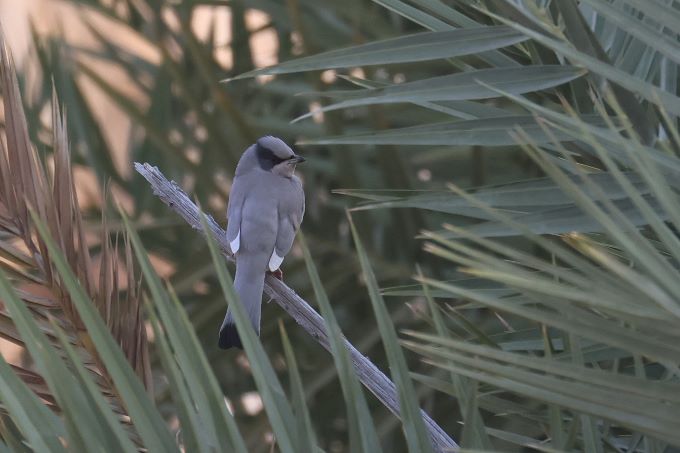
The only species in its family, the Hypocolius was voted as best bird of the trip!
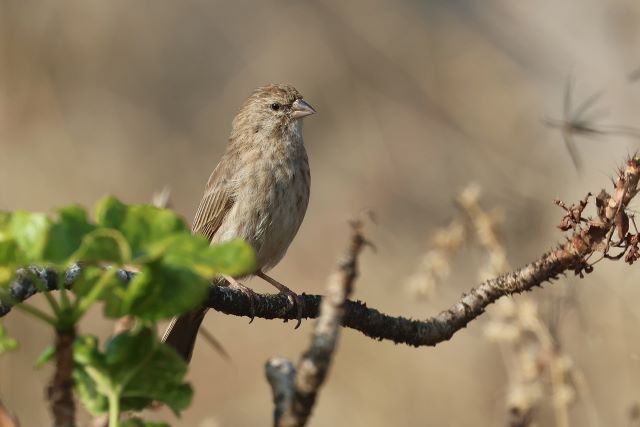
Dull is beautiful! Yemen Serin is one of the many Arabian Peninsula specialties we found during the tour.
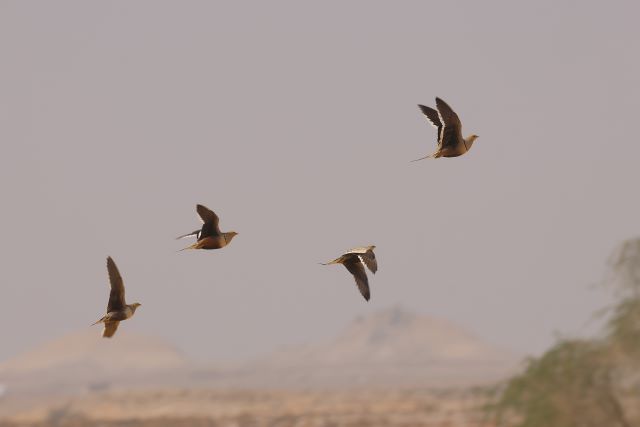
A few of the hundreds of Chestnut-bellied Sandgrouse seen coming to a water hole in the desert.
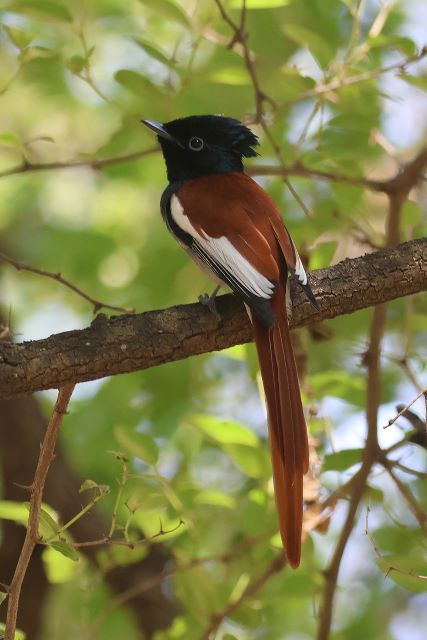
African Paradise Flycatcher is a common resident in the Dhofar region.
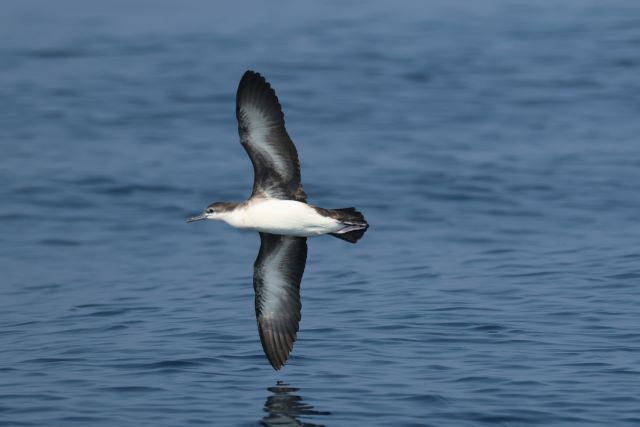
Persian Shearwater is almost guaranteed on our pelagic trip off Mirbat.
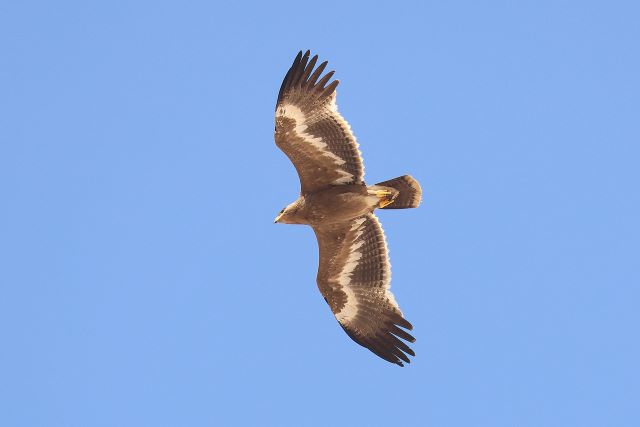
One of the many Steppe Eagles seen during the tour; here a first winter.
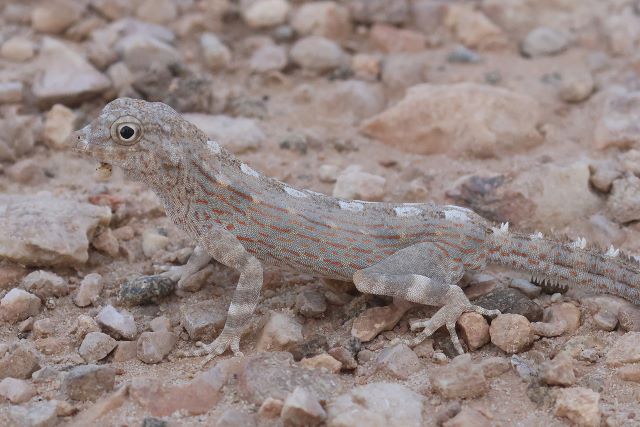
In addition to birds, Oman is a wonderful destination to look for amazing creatures such this Carter's Rock Gecko.
December 12:
Rich Hoyer reports on a recent tour to the Yucatan
The American Flamingo might be the Yucatan Peninsula’s most iconic bird, and on our recent tour to this region and the adjacent island of Cozumel we learned that the lawn ornament is no substitute for seeing the real thing. From distant splashes of shocking pink in the Rio Lagartos estuary, to ridiculously stretched-out birds flying over the mangroves, to an astonishing drive-up view of several birds almost too close to focus on, we experienced the essence of this beauty, voted favorite bird of the tour. Also memorable were all birds with Yucatan in the name – regional endemics such as the wren, the gnatcatcher, and the jay, all of which we saw well. Some of the sought-after regional endemics have more descriptive names – Gray-throated Chat and Yellow-lored Parrot were two that we enjoyed thoroughly. We also experienced a touch of the wider Neotropical region, with the likes of a stunning male Red-capped Manakin and several swarms of two species of army ants attended by multiple birds. One close swarm in a perfect viewing situation had us captivated for 40 minutes with about 10 species of birds taking advantage of the easy pickings (the birds eat critters flushed by the ants, not the ants themselves). It was also fun to become familiar with birds on their non-breeding grounds, having escaped the northern winter, such as a male Painted Bunting and many Magnolia and Black-throated Green Warblers, White-eyed Vireos, and not just a few Least Flycatchers. Then of course, there were more than just birds, such as blindingly blue Common Morphos, Crimson-patched Longwings, a giant Morelet’s Crocodile, and mind-numbing numbers of Central American Locusts in one of those swarms we had all only ever read about.
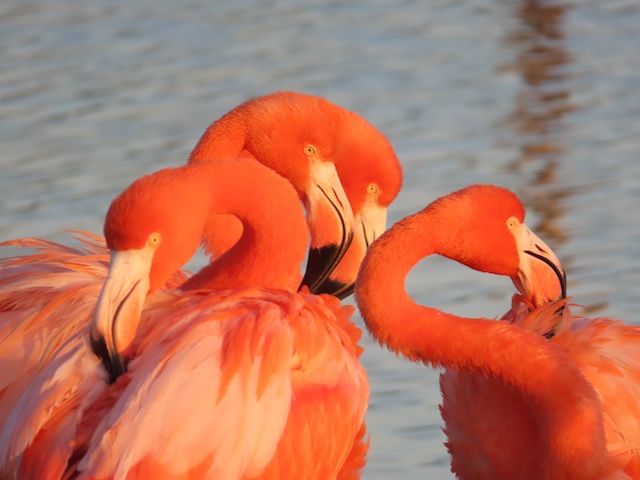
American Flamingos at such close range are unforgettable.
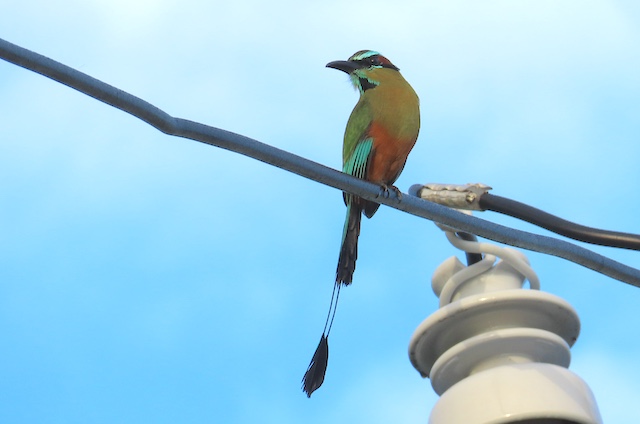
Seeing a Turquoise-browed Motmot perched on a powerline is not a sight you can prepare yourself for.
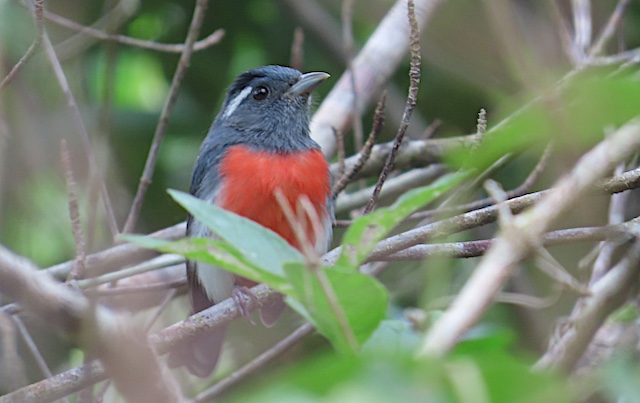
Pretty, adorable, and regional endemic all aptly describe the Gray-throated Chat.
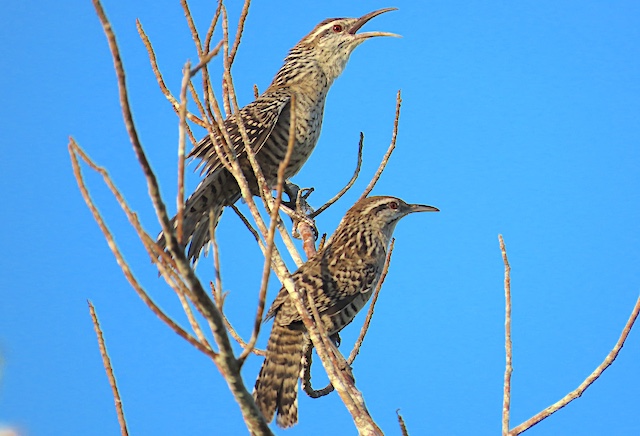
Yucatan Wrens recall the Cactus Wren of more northerly climes, but this regional endemic is quite distinctive with a fantastic duet.
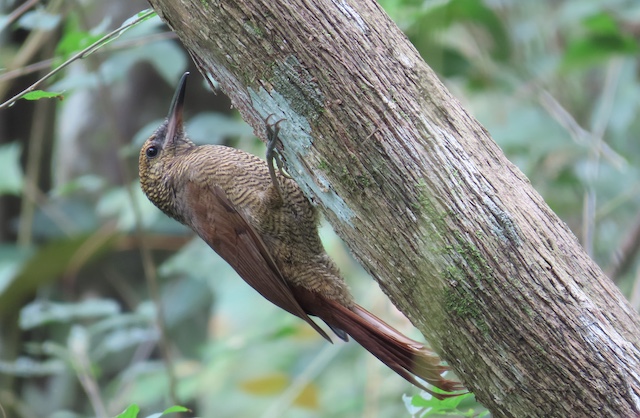
This Northern Barred-Woodcreeper was one of about 10 species of bird attending an ant swarm.
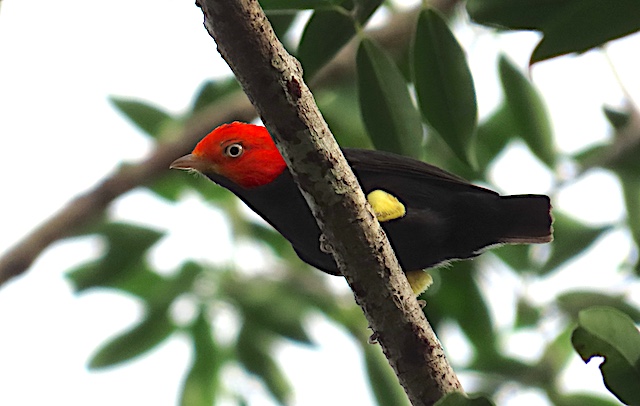
We were lucky to bump into this male Red-capped Manakin as he fed in a fruiting tree.
The most commonly seen butterfly on the tour was the lovely Crimson-patched Longwing.
December 5:
Ethan Kistler reports from Eastern South Africa
Steve Rooke and I recently finished the 19-day Eastern South Africa tour. Our route provided us with the opportunity to experience a variety of habitats and bird communities from sea level, along the Indian Ocean coast, to over 9400’ along Sani Pass in the Drakensberg escarpment. We tallied nearly 440 species of birds with some of the highlights being Striped Flufftail, three species of cranes, 47 species of raptors (eagles, owls, falcons, etc.), Cape Parrot, Drakensberg Rockjumper, around a dozen species of larks, the critically endangered Montane Blue Swallow, and a bonus Whinchat. The latter was a vagrant and only the 14th record for the country.
Mammals didn’t disappoint either. We successfully tracked down the “Big Five”: buffalo, rhino, lion, elephant, and Leopard, in addition to finding African Wild Cat, Meerkat, Spotted-necked Otter, and an unprecedented two Aardvarks! It’s not every day you see an Aardvark, let alone two, certainly not in the Kruger National Park on the same day! The 2024 Eastern South Africa tour is well anticipated!
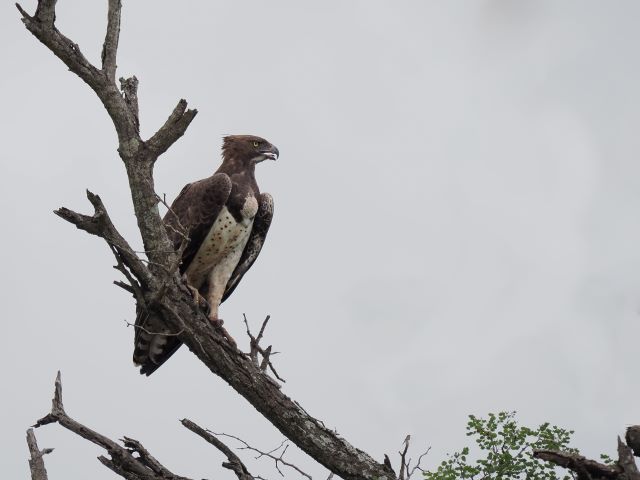
Martial Eagle was one of 47 raptors recorded on this tour. One of the largest eagles in the world, they have been known to take large pray including Impala and even lion cubs!
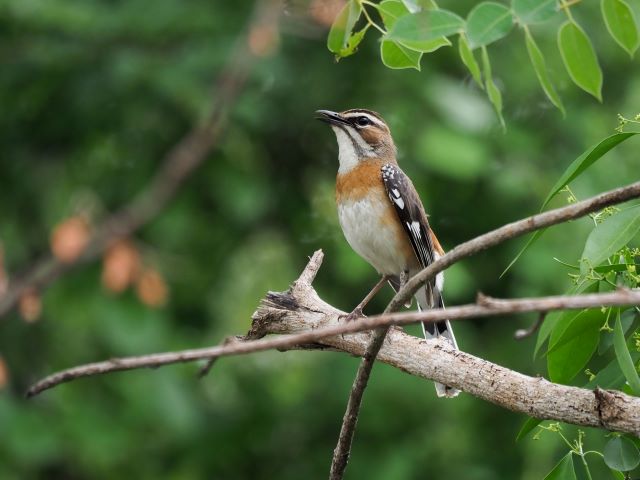
This Bearded Scrub-Robin posed nicely for us as it serenaded us in Kruger National Park.
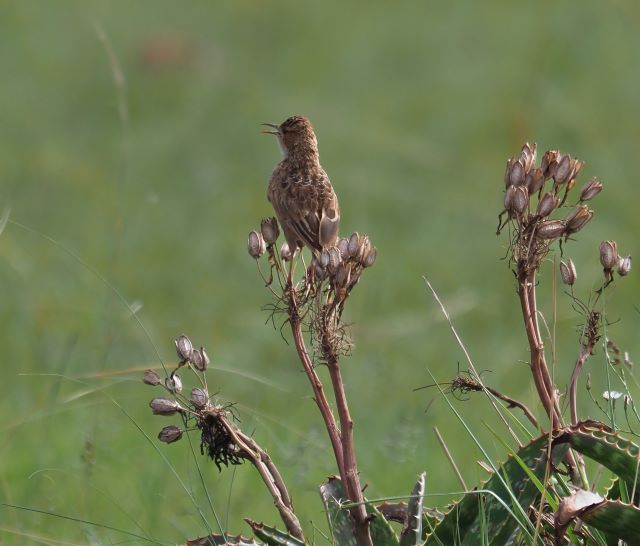
One of many species of larks in South Africa, the distinctive Spike-heeled Lark has a very short tail, and was seen close to where we had the endangered Rudd’s Lark.
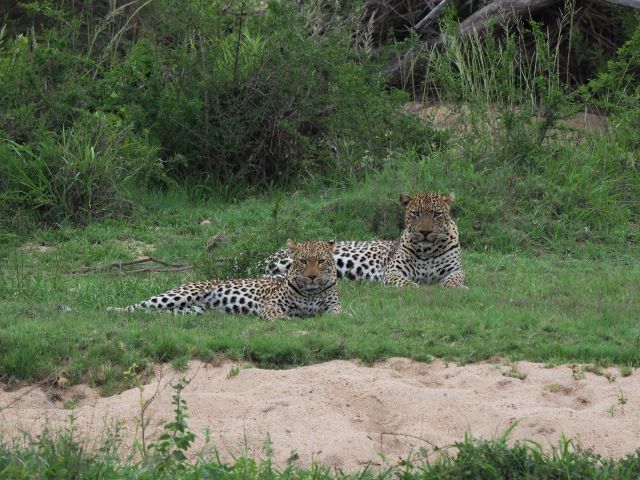
One of our mammal highlights, this mating Leopard couple clearly shows the remarkable size difference between male and female.
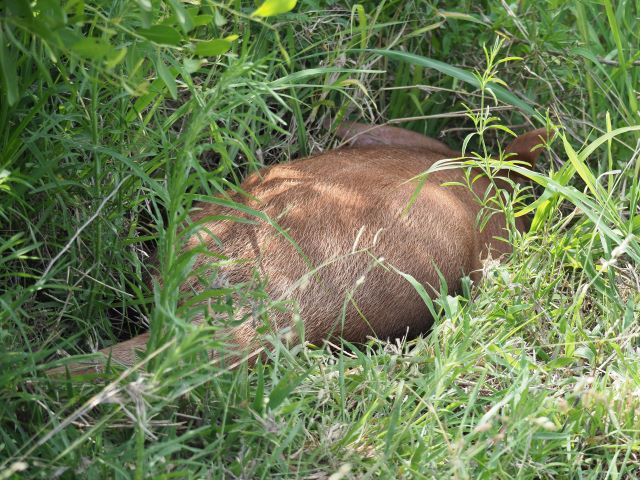
A once in a lifetime experience, we had this young Aardvark in the morning near Lower Saber Camp in Kruger National Park. We then found an adult on our night drive out of Skukuza Camp that same evening!
December 4:
Rich Hoyer recently returned from a wonderful tour in Bahia, Brazil
The Bahia, Brazil tour went beautifully this year, with great birds, fabulous scenery, amazing wildlife, and a very harmonious and diligent group of participants. Our bird list of nearly 375 species will be hard to beat in the future, and it made my job enjoyable to have all the participants so vigilant and active in spotting birds and helping to get each other on everything. When it comes to choosing the favorite birds of the tour, it’s often a little challenging to remember back nearly two weeks, so the Indigo Macaw experience on our second day near Canudos clearly made a lasting impression. With around 40 birds raucously flying around in a picturesque sandstone canyon landscape, and several pairs perched and squabbling over potential nesting nooks, it was a side trip to the north of the state well worth the effort. Farther south, the Chapada Diamantina area, with its stunning landscapes and hyper-local distributions of strange plants and animals, gave up a few of its specialties, such as Sincora Antwren and Collared Crescentchest, and we lucked out with three species of tinamous seen, such as two Spotted Nothuras in the stunted shrubland south of Mucugê. The pair of Burrowing Owls at the Byzantine Cemetery right by town were also a big hit. Farther south yet, the area near Boa Nova offered an amazing contrast in the rapid transition of ecoregions from the dry Caatinga to the wet Atlantic rain forest, and here we enjoyed Swallow-tailed Hummingbird and Pygmy Nightjar in the former and Spot-breasted Antvireo and Striated Softtail in the latter – in birding sites only 25 minutes from each other. The moths, spiders, and plants at Serra Bonita reserve were spectacular, and the bird soundscape here was fabulous. We heard the amazing descending whistle songs of Sharpbill almost everywhere, so it wasn’t a surprise that we had great views of several; a big surprise though was getting great views of an Ash-throated Crake that inhabited the overgrown pasture of the farm located in the middle of the otherwise forested reserve. Our drives were often long between hotels, but we broke them up with quick stops at wet areas, a result of what had apparently been a late and abundant previous rainy season. By far the most exciting highlight at one of them was a stray Pinnated Bittern, far from its southern Brazil breeding distribution. We ended the tour at the tropical coastal resort town of Porto Seguro, sort of the Miami of Brazil, and the large, protected track of lowland forest of Estação Veracel added several nice endemics to the list. The main highlight here though was a pair of Mottled Owls (a likely split from Central American birds), one of which perched low in the understory much closer that we had originally thought. I look forward to returning here in 2025 a tour that can be taken in combination with the wonderful birding in the neighboring state of Minas Gerais.
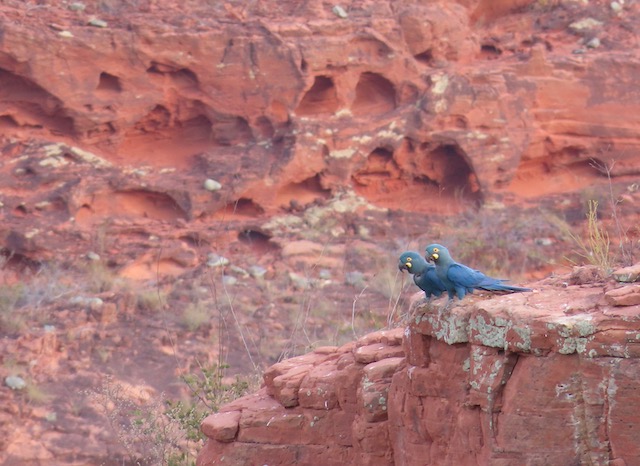
This pair of Indigo Macaws wasn’t the closest one we saw, but their perch above the cliffs gives a glimpse of the spectacular scenery they inhabit.
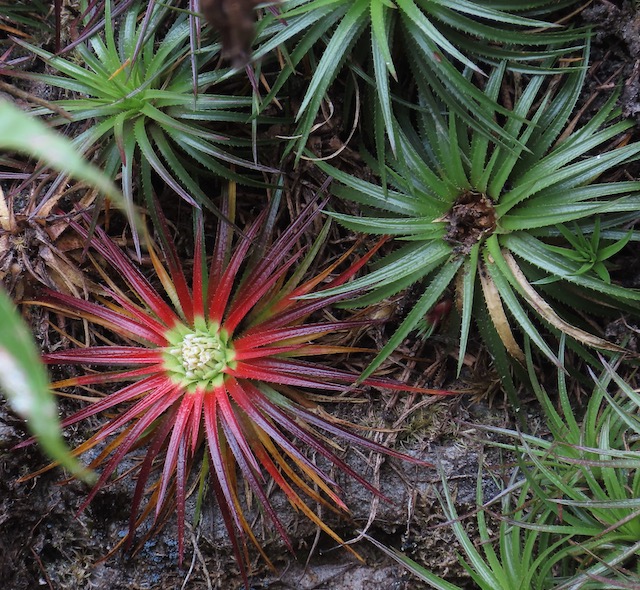
The plant life of Chapada Diamantina is famous among botanists, with new species being described all the time; this bizarre, highly localized bromeliad is Sincoraea mucugensis, named after the town Mucugê where we spent two nights.
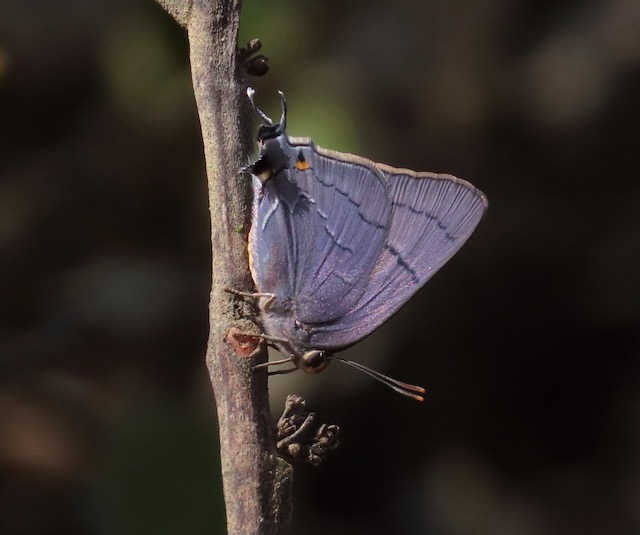
We did not see huge numbers of butterflies, as the rainy season was still a few weeks away, so it was fun to learn that this unusual looking Atlides hairstreak is an undescribed species that had never before been photographed in the wild.
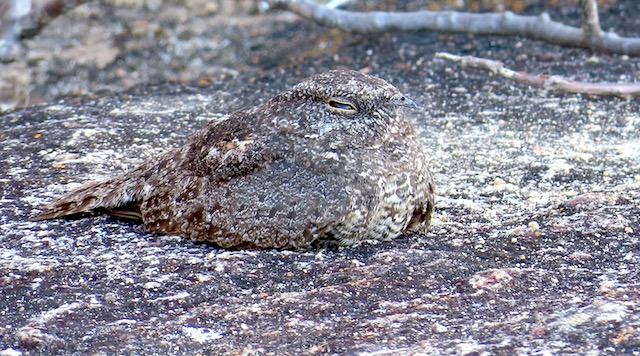
One can be forgiven for not spotting a Pygmy Nightjar sitting wide out in the open before it patters across the granite rock outcropping on its tiptoes, suddenly revealing its presence.
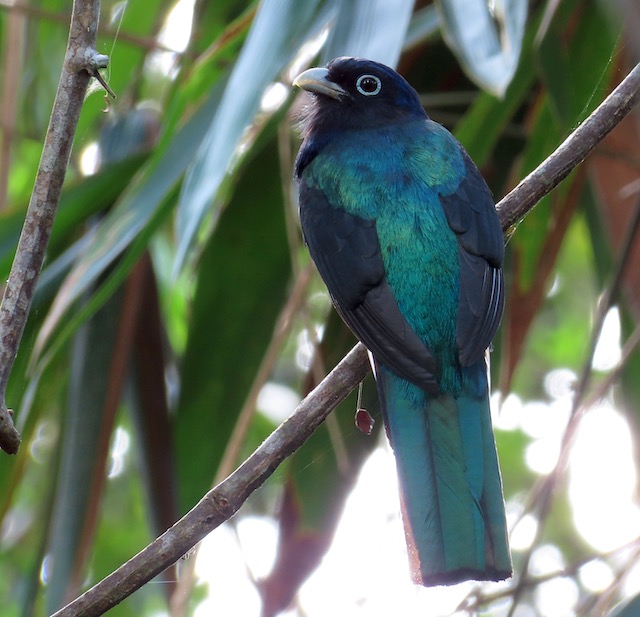
The Green-backed Trogon is as photogenic as any member of this gorgeous family of birds.
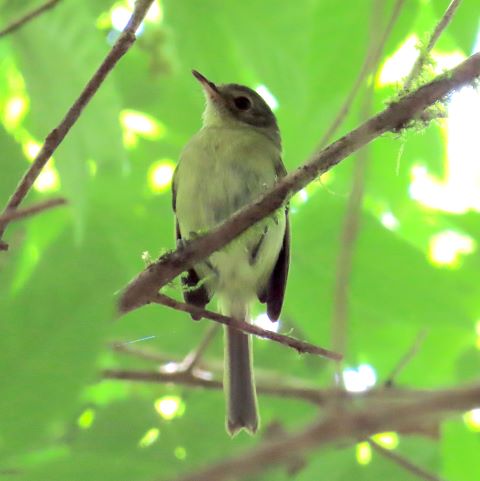
The highly localized Bahia Tyrannulet is difficult to detect and see well, so we were lucky to have experienced two of them at Serra Bonita.
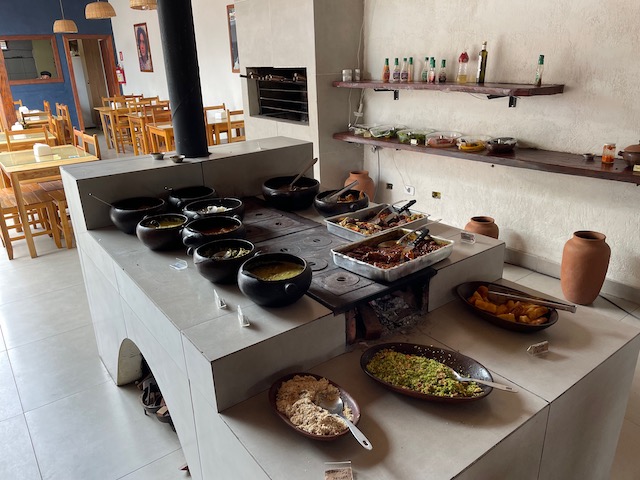
Everyone was duly impressed with the variety and quality of food on this tour, with fresh salads and regional dishes offered at typical “self-service” lunch stops everywhere. Cláudia’s in Mucugê was one of the best.
